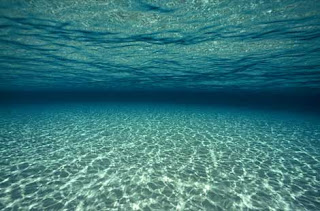Oceans cover about 70% of the earth’s surface
Oceans contain roughly about 97% of earth water supply
Oceans affect temperatures and weather
All the oceans are connected together
Pacific Ocean – 64,186,000 area square miles depth 15,215, deepest depth the Mariana trench 36,200
Atlantic ocean- 33,420,000 area square miles depth 12,881, deepest depth the Puerto Rico trench 28,231
Indiana ocean- 28,350,000 area square miles depth 13,002, deepest depth the java trench 25,344
Antarctic ocean also known as the Southern ocean- 7,848,300 area square miles depth 13,100-16,400 deepest depth the southern end of the south sandwich trench 23,736
Arctic ocean- 5,106,000 area square miles depth 3,953 deepest depth Eurasia basin 17,881
Volcanoes under water get up to 2 stories tall white smoke come out of them which are cooler and often contain white compounds. Experts say that in the volcanoes the water is superheated which can get up to 750 degrees the pressure gets up to 500 times stronger than the earth atmosphere even though the volcanoes have toxic metals it doesn’t harm animals. These volcanoes are in the Pacific Ocean.
The Mariana trench is located in the Pacific Ocean just east of the 14 Mariana island 11”21’ north latitude and 142” 12” east longitude near Japan. It is the deepest part of the earth’s oceans and is the earth’s itself. It was created by a phenomena in which a plate topped by the oceanic crust and sub ducted under a plate topped by ocean crust. The deepest part of the trench is called the challenger deep.
The oceans have many features like land there’s mountains, canyons, plateaus, plains, and deep trenches.
Oceans are full of life like plankton, gigantic blue whales, plants, coral, fish, jellyfish, sea stars, sharks, rays, sea turtles, dolphins, many different types of whales, octopuses, squid, lancet fish, lantern fish, anglerfish, gulper eels, viperfish, huge clams, shrimp, tube worms, frogfishes, seals, sea lions,
The farther you go in the oceans the colder and darker it gets. The water pressure gets harder to a marine boat could be crusted in seconds or the windows could brake and you would drowned.
Some fish live in the more dark areas they have their own lights to see and they prey on smaller animals. They hind in the dark and wait for their prey to swim by and they attack.
The coldest ocean is the Arctic Ocean it is also the smallest ocean because this ocean is covered in ice.
The warmest ocean is the Indiana Ocean but the south of the waters are cold where the ocean meets the southern ocean.



